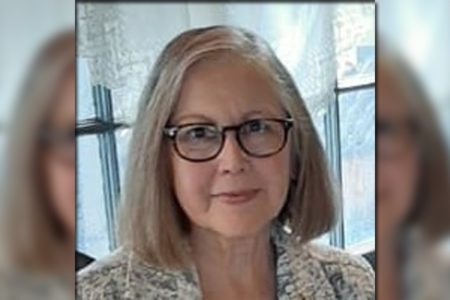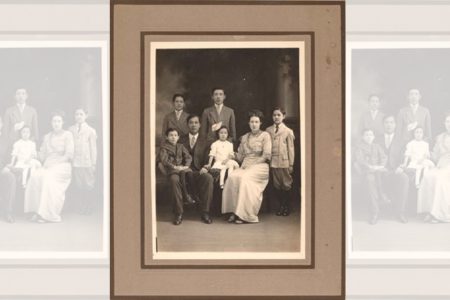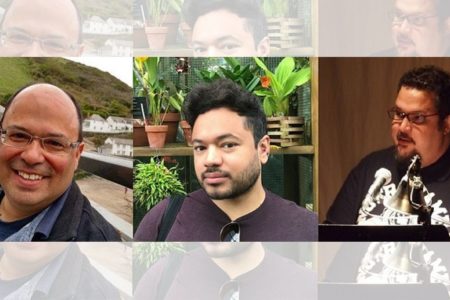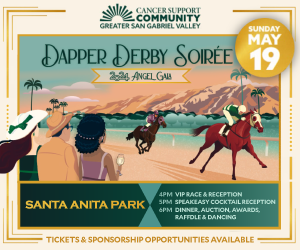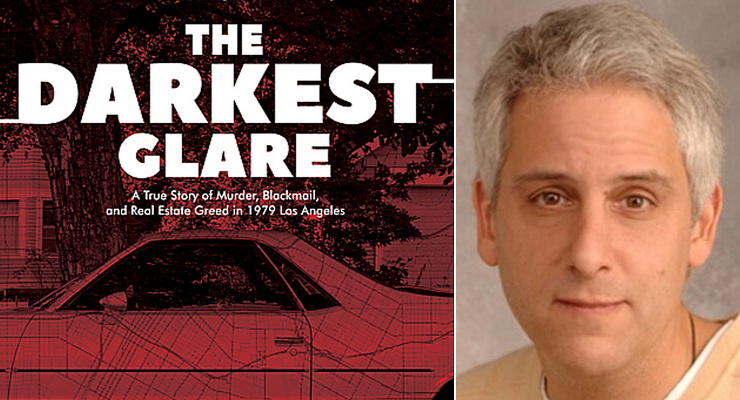
The critics have had their say about the latest non-fiction thriller by Pasadena’s Chip Jacobs. And, if all the praise is to be believed, the author of the L.A. Times bestseller “Arroyo: A Novel” — Jacobs’ first crack at historical fiction after producing an impressive array of non-fiction works — has another hit on his hands.
In his soon-to-be-released “The Darkest Glare: A True Story of Murder, Blackmail, and Real Estate Greed,” “Jacobs’ ear for a good story is pitch-perfect, and he tells it with all the smoggy pastel colors of post-noir LA. ‘The Darkest Glare’ isn’t an old song in a new key, but an entirely new song about crime, fear, and a weird kind of redemption that could only happen in the general vicinity of Hollywood,” says fellow writer Ron Franscell, author of “The Darkest Night.”
Said Steve Hodell, author of “Black Dahlia Avenger: A Genius for Murder,” a former LAPD detective who believes his father was responsible for that gruesome historic slaying, “This is not just another Hollywood Whodunit. In the end, we find it is really about one man’s search and struggle to find his own personal truths and redemption. Well written and highly recommended.”
And, in the opinion of Stephen Jay Schwartz, author of “Boulevard,” “Jacobs delivers a seductive tour of an L.A. rife with murder-for-hire plots, political corruption and sociopathic schemes. … I couldn’t put it down!”
In his own words, Jacobs’ introduction to his latest work describes his main characters, among them Jerry Schneiderman, a man he met as a news reporter and once wrote another book about in 2012 titled “The Ascension of Jerry: Murder, Hitmen, and the Making of L.A. Muckraker Jerry Schneiderman.”
Of his latest work, Jacobs writes that “in 1979 the City of Angels had its fair share of devils. Howard Garrett was one of them. His contractor’s license bought him an entrée into Space Matters, a real estate development company run out of a hip mansion on the edge of LA’s Miracle Mile district.
“The company’s owners, debonair, slick-talking Richard Kasparov and self-conscious, nerdy Jerry Schneiderman, were L.A.’s Young Turks of interior architecture. When Richard interviewed the quiet, buzzard-faced Howard, he figured he’d found the perfect supervisor to oversee construction for a firm hungry to expand. What neither he nor his partner Jerry
knew was that by hiring Howard, they’d unloosed a monster into their midst.”
As a bonus, Jacobs has included with the book a short true-crime yarn called “Paul & Chuck,” about crusading L.A. attorney Paul Morantz, who in the late 1970s battled Synanon, one of America’s most dangerous and violent cults.
Other books by Jacobs include, “Smogtown: The Lung-burning History of Pollution in Los Angeles” with William J. Kelly, 2008; “Strange As It Seems: The Impossible Life of Gordon Zahler,” 2008; and “The People’s Republic of Chemicals” with William J. Kelly, 2014.
“The Darkest Glare,” published by Rare Bird Books, goes on sale March 9. — Kevin Uhrich
In a recent interview with Jessica Fitzpatrick, Jacobs, an award-winning investigative journalist who had written for L.A.’s top daily newspapers, The New York Times, as well as the L.A. Weekly and the Pasadena Weekly, talks about his latest book, his L.A. Times bestseller “Arroyo,” and what lies ahead.
Q: How did you come across the history of protagonist Jerry Schneiderman?
A: I first met Jerry in the mid-1990s when he was flowering into a civic activist targeting chaotic subway construction and Hollywood’s self-dealing politics. Back then, I was an investigative journalist at the Los Angeles Daily News, and Jerry was unlike any gadflies I’d ever encountered. He wasn’t scruffy or manic or holed up in a rickety apartment like your typical pot-stirrer. He was a suit-wearing real estate developer with property holdings, a used Rolls Royce, and a mischievous sense of humor. While he tipped me off to probably a half-dozen stories that led to front-page exposes, he kept totally silent about his terrifying past until three years into our reporter-source relationship. Then one day, completely un-prompted, he asked,
‘Did you know I had a double-murderer chasing me?’ Initially, I figured he was trying to impress me with some cloak-and-dagger tale hard to verify. Boy was I wrong. The plot into which he was sucked was much bigger – and scarier – than he even realized. After piecing it together, I saw the outlines of an entertaining, if frightening drama. In it, we have the collision of a leathery-faced predator who knew how to get away with murder; a Beverly Hills-area slick talker able to lie his way out of almost any mess; and a young, frizzy-haired protagonist who let his ambition outpace his caution by partnering with these two until it put his life in jeopardy, as well as his family. It was a morality tale wrapped up in a plot that seemed like it could only happen in a freeway-strewn, glamour-fueled place like Los Angeles. …
The book features several characters, including Howard Garrett and his associates — Jerry Schneiderman and Richard Kasparov. Can you tell us a little about each character and how they got involved with each other?
Sure. Jerry and Richard were running an upstart, Los Angeles space-planning firm near hip Miracle Mile when Richard sweet-talked Jerry into expanding into suite construction and luxury home remodeling. Think shortcut-to-riches scheme. Jerry, the youngest person at his own company was dorky but had this genius for interior architecture that put a premium on efficiency. Richard, who Jerry recruited as a partner, was this dashing, charismatic space-planner who could sell ice to the Eskimos. To make their new enterprise work, they needed a construction veteran who knew his way around blueprints and sawdust-filled worksites. Howard, who was older than both of his college-educated associates, fit the ticket, even if his buzzard-y face and quiet demeanor set him apart from the white-collars at the company. At Richard’s urging, he soon agreed to put up his California contractor’s license so their jobs would be legit. They really should’ve conducted a background check on him. They wouldn’t like what they found.
The book is in Southern California in the late 1970s, at a time when the L.A. murder rate was the highest in recorded history, and amidst the rise of violent cults. Tell us about the research you conducted on the time period.
My first dab of research was actually my own memory: of being a teenage driver terrorized by a road-raging motorist on a misty day in 1979. It’s in the prologue of the book both as an era table-setter and because the incident seared into me. When I burrowed into the Jerry-Richard-Howard murder triangle, America’s cantankerous period pre-resonated. Next, I channeled the old journalist in me. I contacted every single person involved in the case by networking and scouring courthouse and other records. Nearly everyone spoke to me. Those who refused, I found, were either too damaged by what happened, had something to hide, or were too peripheral to recall much. From there I read up, in newspapers and magazines and books, about late-seventies America. I also re-watched the classic movie “Network” that typified this stretch of disillusionment that America had gone off the tracks; that the ‘system’ had betrayed blue collars who built this land. Sound familiar?
Born in Pasadena, you are a native to the L.A. area. How did your local roots inform the story and your research?
I adore this question. As a recovering metro reporter, I was always fascinated by the sociology of local freeways – their public health implications, the democratic nature of them, the mathematics of traffic. ‘The Darkest Glare’ gave me another prism by which to study them: their conduciveness to killers who travel across county lines to destroy, and how they set up Southern Californians from wildly different backgrounds to collide and clash. In this story, Richard hailed from affluent, privileged West Los Angeles. Jerry came from nondescript, unglamorous North Hollywood most outsiders couldn’t pick out on a map. Howard, though he lived in Pasadena and neighboring Arcadia during the time I spotlight, associated with criminal elements from the rough-and-tumble eastern areas, specifically Ontario. When these three personalities joined together at the company known as Space Matters, it was like distinct breeds trying to coexist. It didn’t exactly work out, because none of them had any shared experiences — or common morality.
This is not your first foray into investigative stories. How did ‘The Darkest Glare’ differ from your earlier books, such as ‘Strange As It Seems,” and the L.A. Times bestseller, ‘Arroyo’?
‘The Darkest Glare’ required by far the most journalistic techniques to capture. Constant interviews. Hunting for documents. Sitting back to see how the puzzle pieces fit together. By the end, I thought I had a bird’s eye perspective up there with some of the grizzled LAPD detectives and prosecutors. The story that morphed into my first book, ‘Strange As It Seems,’ was a personal journey rediscovering that the deceased uncle I once hated was this miraculous figure who survived a catastrophic injury to live hard, play harder, and make a big name for himself in Hollywood and beyond. While unearthing his life, which I left daily journalism to write, took plenty of old-fashioned digging and interviewing, the narrative emerged straight from my heart. It was a book that also connected me to the incredible number of showbiz and literary figures on my mother’s side of the family. Not only did I take such pride in that, it freed my own imaginative side, filling me with confidence that I could pen a novel even though I’d never typed a single word of fiction before. Drawing on that and other experiences, I used what I learned about Progressive Age Pasadena and its daring Colorado Street Bridge, invented characters and a universe for them, and let it rip in ‘Arroyo.’ I never expected it’d be the success it was. Doing a historical novel dashed with humor and magical realism wasn’t exactly a sure bet. Still, I sincerely believe it’s what the stars wanted me to be doing for my own arc.
‘The Darkest Glare’ includes a bonus original true crime short story, called ‘Paul & Chuck.’ Can you tell us about the protagonist, LA attorney Paul Morantz and his case against the violent cult, Synanon?
Definitely. Los Angeles — make that the world — owes Paul Morantz a monster debt of gratitude. In the late seventies, he could’ve continued practicing law while freelancing magazine features that continued attracting Hollywood interest. But Paul had this strain in him going way back that detested injustice, be it a corrupt judge or a human trafficking ring. He never planned a career battling dangerous cults. As I learned, destiny continually brought them into contact with him. His crusading against Synanon, which had started off as cold-turkey drug rehab before warping into a violent, alternative society, began when a desperate husband asked him to free his wife from its clutches. In a pre-Twitter flash, everyone discovered what the cult did to pay him back, notably grooming reptiles into murderers to silence him. Paul’s world would never be the same, as he later contested brainwashing groups up and down the West Coast, learning that heroism can be a lonely profession.
Grifters are incredibly popular in the media now. ‘The Darkest Glare’ features real-estate grifter Richard Kasparov. His grifts notoriously fail. How does he compare to infamous grifters such as Anna Delvey and Elizabeth Holmes?
Every con, of course, has its own peculiarities, but Richard shared one attribute with the folks you mentioned above: he was not always the person he presented to the world. Now, he never woke up one day deciding he’d become a con man who stole from his own partners or commit other shady acts. He did it, I believe, because of two factors: he was bipolar, subject to dizzying highs and lows that impaired his judgment; and because of unrelenting self-loathing that he failed to live up to the great expectations heaped on him because he was talented, devilishly handsome, and from West L.A. where so many are rich and famous. The proverb about lies begetting lies caught up with them when he hoodwinked someone who wouldn’t let it pass. I sympathize with him, even if he had plenty of time to learn to fly straight and make amends. Sometimes, though, there’s just this grave momentum to tragic events that’s impossible to reverse.
What’s next for you?
A bunch. I’m gearing up to write my second novel, which, like ‘Arroyo’ will be Pasadena-centric, just without the heavyweight of history or so much tongue-in-cheek. It’ll based on a true story of a brilliant, dying friend who came to me to help him compose an apology letter to a fellow classmate who ended up with a bullet through his living room window. I’m also at work on a non-fiction book about the history of America’s longest freeway-construction battle. It’s an incredible tale that you can either spin as David vs. the California Freeway Industrial Complex, or a small town’s tyranny of the minority when it comes to resisting a superhighway threatening to carve it in two. As well as those, I’m working to develop two of my earlier books into entertainment projects and letting my brain ferment new ideas.
For a copy of “The Deadliest Glare,” click this link to pre-order. Jacobs will be appearing virtually at Vroman’s Bookstore on March 10 to speak about the book with author Ron Franscell. Tickets will soon be available at vromansbookstore.com.



